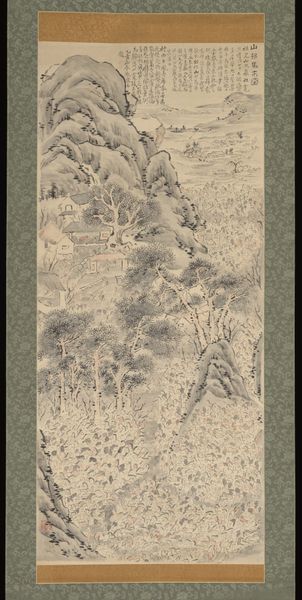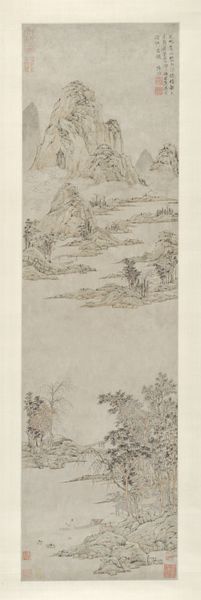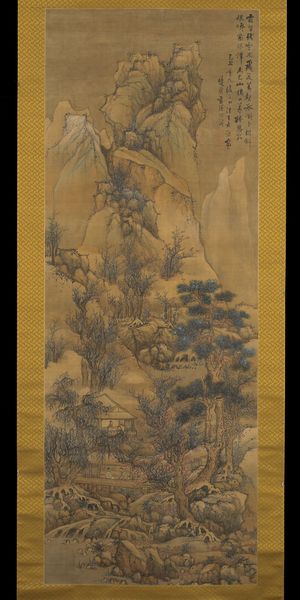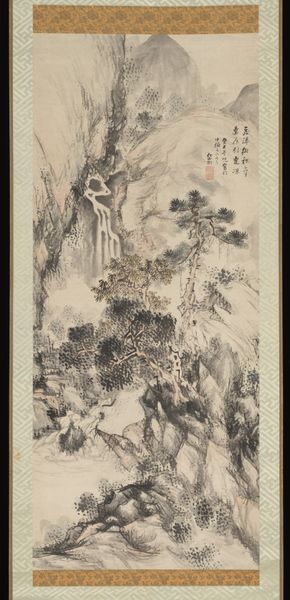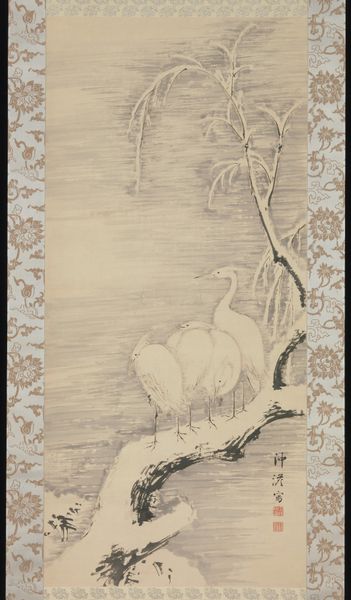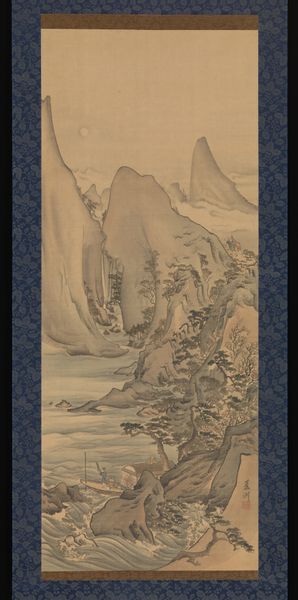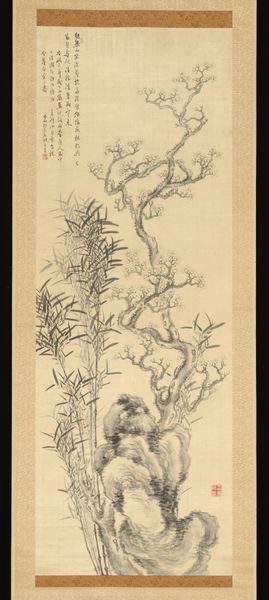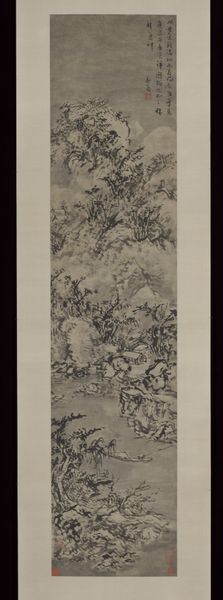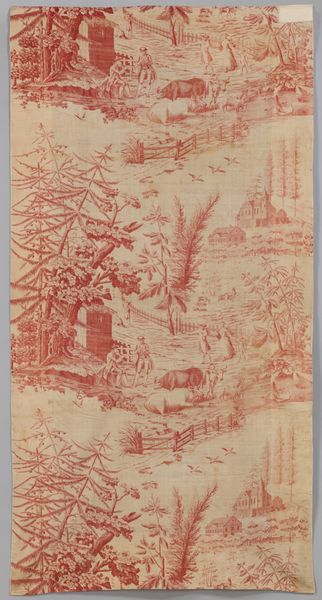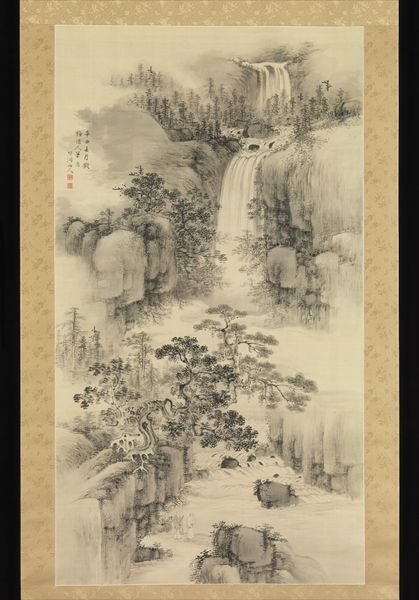
color-on-silk, painting, paper, hanging-scroll, ink, mural
#
color-on-silk
#
painting
#
asian-art
#
landscape
#
japan
#
paper
#
handmade artwork painting
#
hanging-scroll
#
ink
#
orientalism
#
abstraction
#
line
#
mural
Dimensions: 51 1/2 x 13 7/8 in. (130.81 x 35.24 cm) (image)
Copyright: Public Domain
Curator: What a beautifully serene work, rendered in ink and color on silk. This is "Mountain Hermitage Landscape," a hanging scroll painted by Ko Tetsubai, dating back to the late 19th century. It currently resides here at the Minneapolis Institute of Art. Editor: It does evoke a sense of profound stillness. There's a palpable solitude emanating from the scene. The verticality is really striking, how your gaze is constantly moving upwards, mimicking perhaps, the spiritual ascent the artist is trying to capture? Curator: I think you’ve hit on something crucial there. The hanging scroll format itself invites contemplation. It wasn't intended for constant display but rather brought out for specific occasions or periods of reflection. It becomes a performative piece, doesn't it? Its purpose to be seen, and also its role to bring awareness to social or cultural events happening during this time. Editor: Absolutely, and the artist's choice of depicting a hermitage suggests a deliberate withdrawal from society, a search for enlightenment through isolation. Considering the late 19th century in Japan, a period of rapid modernization and Western influence, this piece could be interpreted as a subtle commentary on those changes. A longing for simpler times, perhaps? Curator: Precisely. Landscape painting in Japan, and East Asia more broadly, wasn't merely about depicting scenery; it was about expressing philosophical and social ideals. The hermitage is symbolic, of course. It represents an alternative to the pressures of societal expectation and instead offers a path to self discovery. I like how you address the context of modernization happening at this time. It further confirms that artworks serve as key markers to study a time periods and society. Editor: Also, it speaks to power dynamics. Who has access to this kind of contemplative space? Who gets to opt out of the societal pressures of their time, and who is forced to participate in them, right? I wonder how issues such as socioeconomic background could contribute to having or not having the time to seek hermitage. It brings questions of privilege and access. Curator: That’s a very compelling point to explore further in understanding the painting's social impact. By doing this it pushes past the idea of mere representation and actually considers those viewers experiencing it, which could then affect the way this artwork would be viewed throughout history. Editor: These historical paintings don’t live in a vacuum, and considering them this way encourages us to make critical assessments, not only about its meaning but for whom it held meaning. Curator: It makes us question our own relationship to nature and societal structures.
Comments
No comments
Be the first to comment and join the conversation on the ultimate creative platform.
